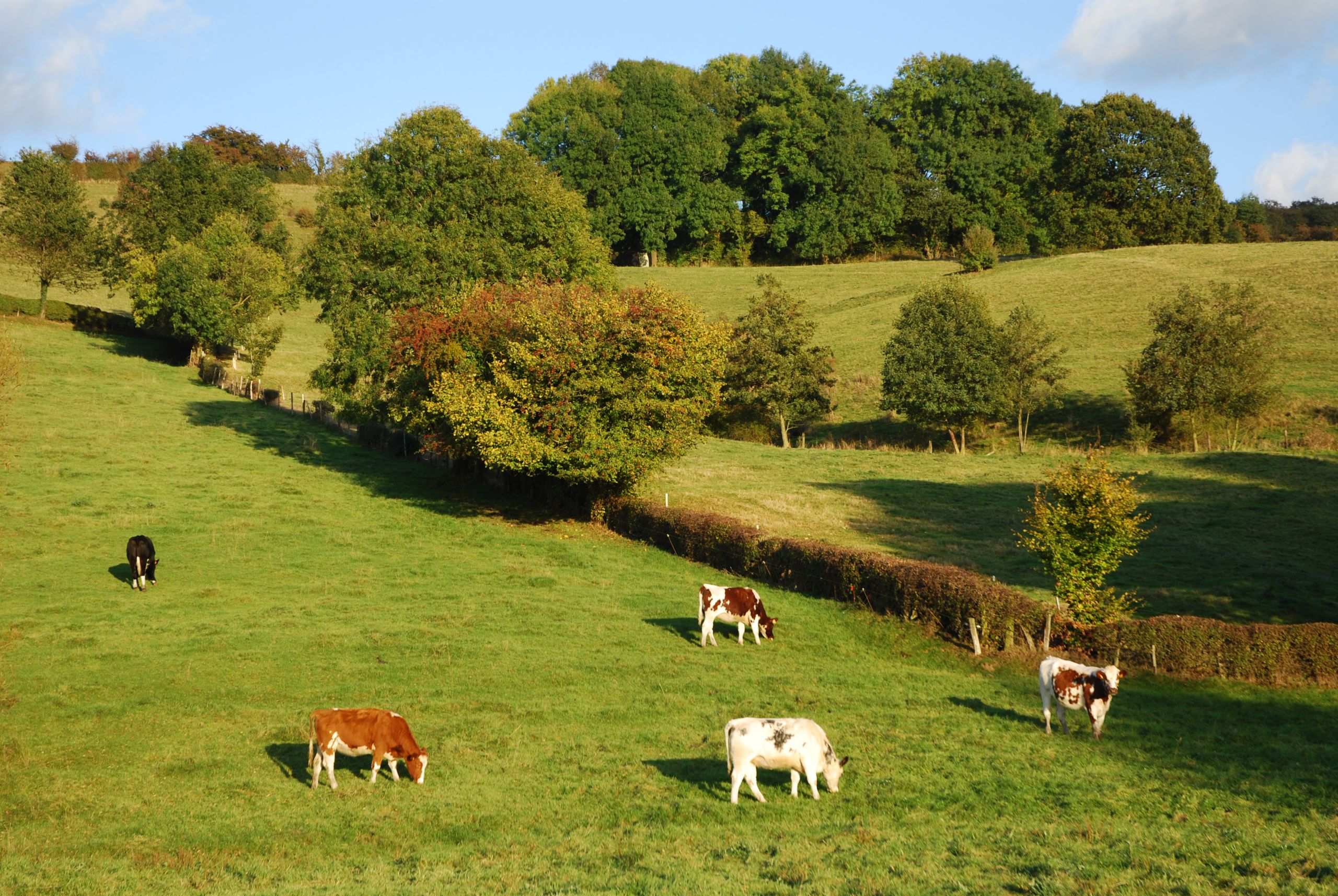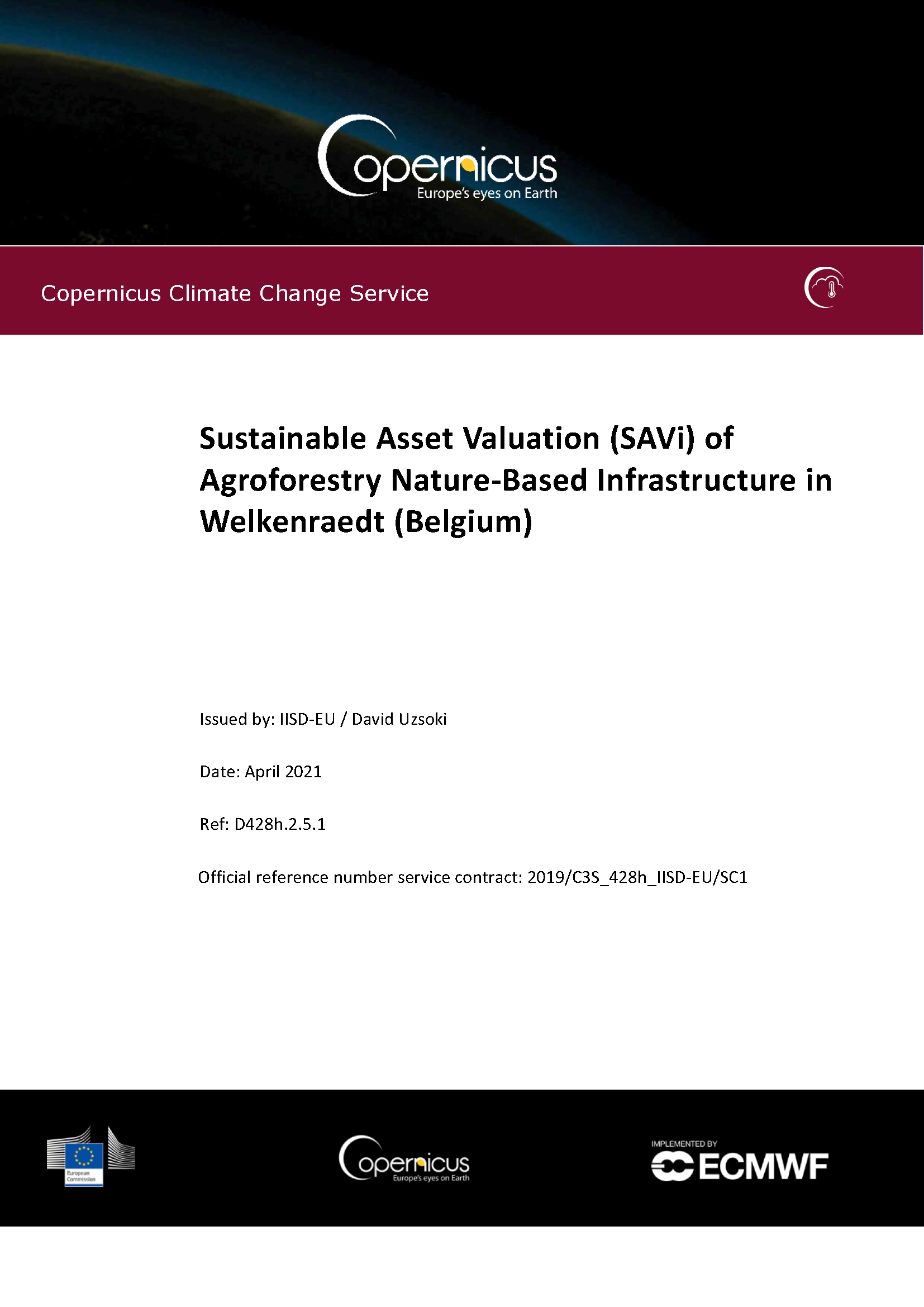How a Belgian municipality is using agroforestry as a solution for climate resilience

Welkenraedt is a municipality in the province of Liège located in the South-East of Belgium close to the Dutch and German border. The region is recognized for its peaceful environment; rolling meadows surrounded by hedges and trees—a landscape shaped by centuries of agriculture.
The quality of these habitats and the farmers who depend on them are, however, increasingly under threat. Climate change is already affecting the variability in temperature and the volume of rain in the region, which is having a direct impact on the wellbeing of livestock and agriculture production.
35% of the soils used for agriculture are losing more than 5 ton of soil per hectare per year and a drought in 2018 caused up to 30% revenue loss for farmers.
Welkenraedt is promoting agroforestry as part of its climate adaptation strategy. Agroforestry is a nature-based infrastructure that aims to maintain and restore soil productivity, combat erosion, maintain high water quality, and strengthen the climate resilience of the area. However, such projects are a hard sell without evidence on the costs, revenues, and co-benefits that they can bring.
IISD provided an integrated cost–benefit analysis with the SAVi methodology to demonstrate that investment in agroforestry brings value for money. The analysis considers the direct costs and revenues, as well as the externalities associated with the project, over the 20-year project lifetime. The simulation is based on the 100,000 m2 of trees and hedges that the municipality plans for. The full results are available in the technical report.
The net benefits of the agroforestry project are estimated at EUR 3.9 million over 20 years for an investment cost of EUR 607,629. When all the revenues and externalities of the project are considered, the internal rate of return is 27.85%, demonstrating that agroforestry is a worthwhile use of public resources in this context.
The Copernicus Climate Change Service data (C3S data)—an information service provided by the EU'S Copernicus Earth Observation Programme—was integrated into the SAVi model to help demonstrate that the windbreaker effect of agroforestry in Welkenraedt would generate an additional EUR 1,384,659 in agricultural production (over 20 years). Similarly, the impact of reduced temperatures on the livestock help to generate an additional EUR 139,845 (over 20 years).
MEASURING CLIMATE CHANGE IMPACTS
Air temperature
Location specific data from the Copernicus Climate Data Store (C3S) helps us assess and evaluate climate impacts. We have integrated C3S data into our SAVi models to be able to assess the impacts of climate change on infrastructure projects, including nature-based infrastructure. For example, figures 1 and 2 below show temperature changes in the next 20 years in Welkenraedt under different climate scenarios.1
Figure 1 – Temperature in Welkenraedt under RCP 4.5 scenario
Figure 2 – Temperature in Welkenraedt under RCP 8.5 scenario
Based on this information, we see that the municipality is increasingly vulnerable to rising temperatures, and more so under the emission intensive RCP 8.5 scenario.
1The SAVi analysis simulates the value of agroforestry under two climate scenarios: (1) The RCP 4.5 climate scenario assumes that emissions peak in 2040 and begin to decline thereafter. (2) The RCP 8.5 scenario assumes that fossil fuel intensive forms of energy generation continue to be used heavily through the remainder of the century.
Precipitation and wind patterns
Extreme rainfall events will become more frequent in the future. The runoff associated with these rainfall events will increase and therefore transport more nutrients, such as nitrogen and phosphorus, to local waterways.
The SAVi analysis with climate data also illustrates that under an emission intensive scenario wind speeds will increase which will reduce agricultural yields.
Figures 3 and 4 demonstrate that in Welkenraedt large precipitation events will become more frequent in the future.
Figure 3 – Precipitation in Welkenraedt under RCP 4.5 scenario
Figure 4 – Precipitation in Welkenraedt under RCP 8.5 scenario
NATURE-BASED SOLUTIONS TO CLIMATE CHANGE
The municipality of Welkenraedt turned to agroforestry projects to adapt to these climate impacts. In particular, they seek to maintain and enhance the number of trees and hedges on farmers’ land, which provide various important functions—from protecting against soil erosion to acting as natural wind breakers. Our analysis valued the services that the agroforestry project brings:
• habitat quality
• nitrogen and phosphorus removal
• carbon sequestration
• water supply
• tourism related revenues
• agriculture related revenues
• biomass energy production
• improved climate resilience
The SAVi assessment enables the municipality and other stakeholders to understand and appreciate the monetary value of these services.

LOCAL ANALYSIS, LOCAL PROJECTIONS
Assessing the value of nature-based infrastructure, such as agroforestry, requires a location-specific approach. This is why our SAVi analysis generates maps2 to provide a more accurate analysis of the value of nature-based infrastructure.

Habitat quality in Welkenraedt improves thanks to agroforestry.
Habitat quality in Welkenraedt improves thanks to agroforestry.
2The maps are generated through spatial analysis with the InVEST model (Integrated Valuation of Ecosystem Services and Tradeoffs ). InVEST is an open source model developed by the Natural Capital Project to map and value the goods and services derived from nature.
APPRECIATING THE VALUE OF NATURAL CAPITAL
The results of the SAVi assessment enable the municipality of Welkenraedt to communicate the importance of agroforestry and, most importantly, to demonstrate its multiple benefits to a diverse group of stakeholders. This is the information necessary to plan and develop subsequent financing solutions for nature-based infrastructure. Policy-makers can also use it to make decisions on climate adaptation planning, sustainable agriculture, and economic development. Public budget holders can use the analysis to appreciate the value generated by natural capital, the avoided costs, and the extent to which it generates additional co-benefits.
"Local authorities have an important role to play in promoting climate change adaptation. It is important for the municipality of Welkenraedt to have a detailed analysis of the opportunities offered by agroforestry in our territory to stimulate local actors to deploy such [nature-based] infrastructure. The collaboration with IISD is a great opportunity to be able to project the future on the basis of solid scientific data in order to bring out concrete realities.










